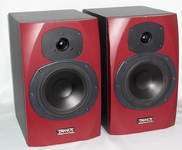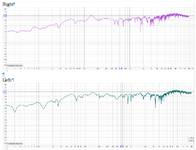Hi folks. For my home mixing and mastering, I'm still using a pair of passive Tannoy Reveals that I bought 20 years ago. Do you think these are still likely to be good, or should I replace them due to their age? Are there better budget monitors of a similar (or smaller) size nowadays? I'm thinking of replacing them with active monitors anyway, and something without bass ports on the back, as my monitors need to be tight up against a wall. I've muffled the rear ports on the Tannoy Reveals (stuffed rags in them) for this reason, and use a sub-woofer to hear the lower frequencies. Many thanks!
Attachments
Last edited:



